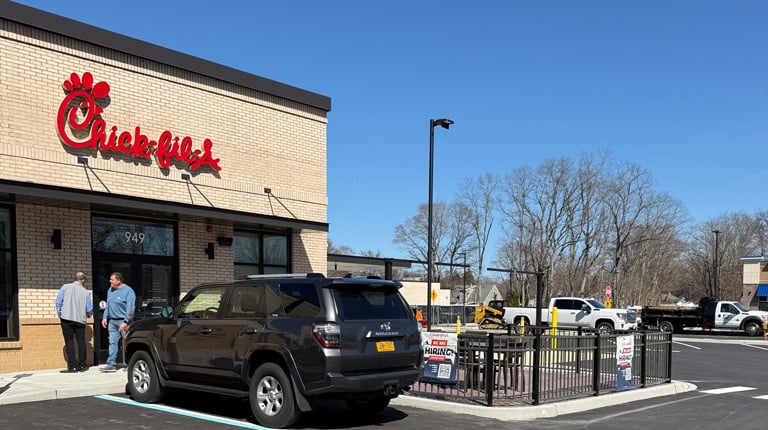
Paul Vitaliano is a leading voice in Connecticut's real estate market. His informed analysis and forward-thinking approach are shaping vital conversations around land development, sustainable practices, and renewable energy. This article distills insights from a recent interview with Paul, illuminating his perspectives on the pressing issues and opportunities in the sector and Connecticut's evolving real estate landscape.
VHB: Connecticut’s governor says the state experienced population growth during the COVID-19 pandemic. How has this impacted the real estate landscape?
Paul: The COVID-19 pandemic displaced a lot of people from big cities to more suburban and rural locals. This type of displacement happened all over the country and in Connecticut, people are feeling it in the lack of available housing and the increased prices for units that make it to market. This, combined with stabilization of the cost of construction materials, has boosted the residential real estate market.
Additionally, the state has recently passed laws aimed at boosting affordable housing. Connecticut has old housing stock and nationally some of the country's most expensive housing and energy costs. There’s an urgent need for new development to house newcomers and offer affordable options to make our state livable for all.
Alongside this, we’re also seeing a demand for projects that enhance mass transit systems through improved rail and bus lines, which are essential for supporting new housing and infrastructure projects and creating mobility access and connectivity for our residents and visitors.
VHB: Tell us more specifically about the opportunities for affordable housing development in Connecticut.
Paul: Having been born and raised in Hartford, I understand the fundamental importance of a stable home environment. I was fortunate to have a safe and stable home growing up, and I believe others fundamentally deserve this as well. Building affordable housing with access to jobs through public transportation creates this opportunity for all Connecticut residents, which is especially important as the state looks for opportunities to grow.
In the southwestern part of the state, those New York transplants are realizing they can take advantage of the benefits of living in Connecticut while still commuting to New York on the Metropolitan Transportation Authority’s (MTA) Metro-North Railroad. There is a huge opportunity for developers to create affordable housing for these newcomers along the rail corridor.
Meanwhile, in southeastern Connecticut, General Dynamics Electric Boat plans to hire 5,000 workers this year after hiring that same number in 2023. But without housing for those new workers, Electric Boat will struggle in its recruitment efforts. Electric Boat’s new workforce presents market demand and a strategic opportunity for developers. It is also a chance to reinvigorate the underappreciated southeastern portion of Connecticut, which is something I’m passionate about.
VHB: What environmental challenges are developers facing and how are they addressing them?
Paul: Energy efficiency is a universal challenge. Institutions, like our higher education clients, are primarily addressing sustainability through implementing steam-to-water heat exchangers and geothermal energy. I foresee developers in Connecticut continuing to strategize around energy and sustainability in the years to come.
Meanwhile, developers are grappling with evolving challenges in stormwater management, wetland preservation, and energy efficiency. VHB underscores the importance of adopting new federal regulations for wetland classification and large-scale infiltration practices on all our projects. For example, 2024 Department of Energy and Environmental Protection (DEEP) stormwater regulations make former “guidelines” requirements. While this impacts how we approach design and developer’s cost, implementing these measures will make certain our sites are sustainably developed so our state is resilient for years to come.
VHB: How is technology impacting land development, from planning to execution, in Connecticut?
Paul: Technological advancements in GIS and geomatics—things like 3D scanning, drone surveys, aerial photogrammetry, and ArcGIS—are changing the way we help clients find and vet sites for development and execute projects. The data from these technologies tells us about any infrastructure in the area and the land—its topography, soil qualities, and any potential environmental concerns that might complicate development. We’re then able to synthesize the data to build models of the land and preexisting infrastructure to understand how they will interact with future land development projects. This allows us to propose sites to developers with an understanding of which sites will best suit their needs and are most strategic for development. The models come into use later, as the basis for model-based design during the engineering process.
For example, in Connecticut, there is a big push toward transit-oriented development: building communities centered around public transportation hubs. We can leverage technology to gain a comprehensive understanding of train and bus station locations and preexisting developments to identify sites that advance the transit-oriented development initiative. We can then propose these sites to developers as strategic opportunities where new developments can meet market demand.
VHB: What do you see as areas for strategic growth in the Connecticut real estate market?
Paul: Based on our comprehensive analysis of Connecticut’s real estate dynamics, VHB predicts growth in affordable housing, infrastructure enhancement, and sustainable practices. We encourage a holistic approach: Leveraging local synergies, technological innovations, and effective community engagement to mitigate any local resistance to projects will help developers tackle current market challenges while aligning with long-term development goals.
Learn more about VHB Real Estate services by emailing Paul and connecting on LinkedIn.


